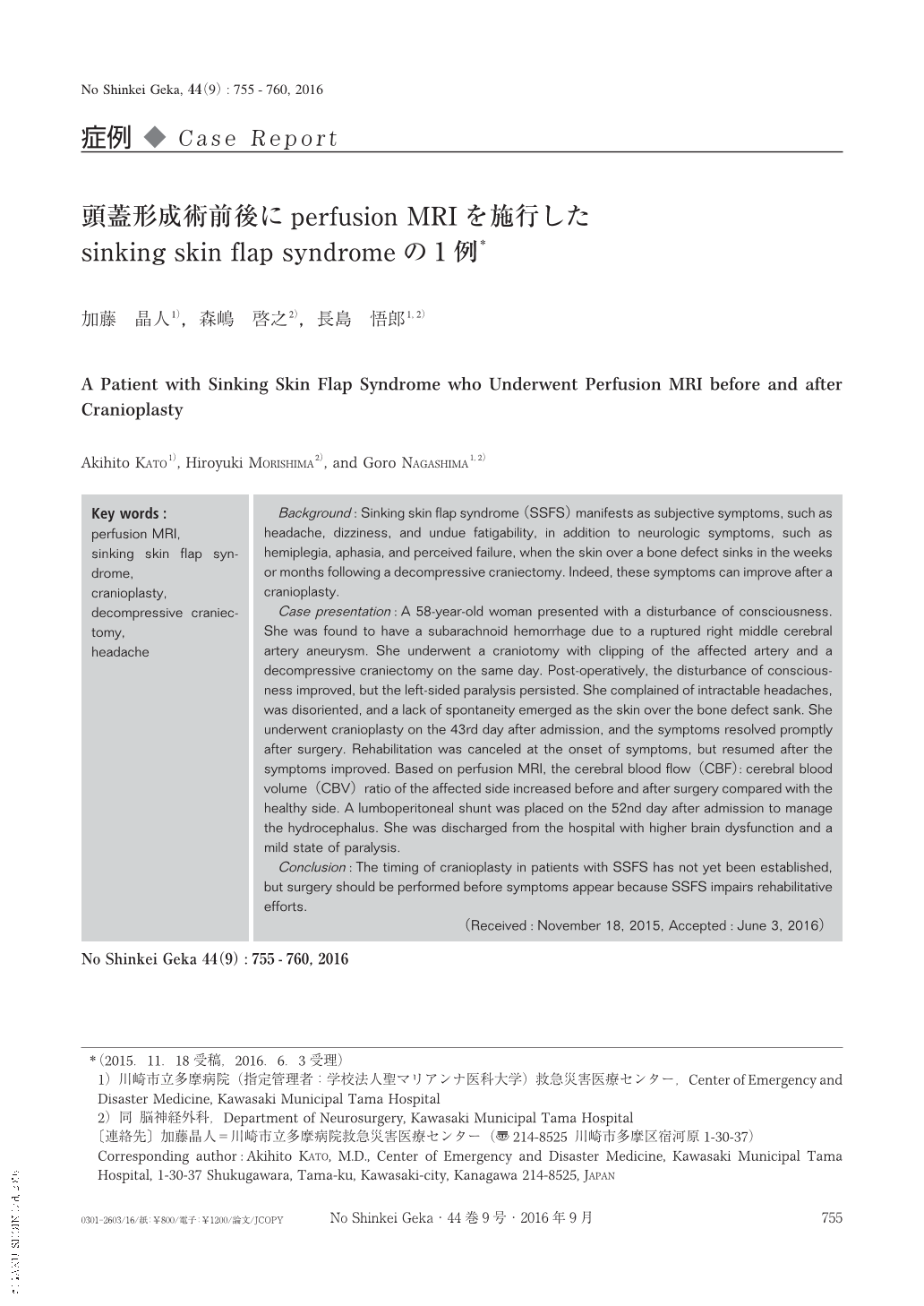Japanese
English
- 有料閲覧
- Abstract 文献概要
- 1ページ目 Look Inside
- 参考文献 Reference
Ⅰ.はじめに
広範囲減圧開頭術は,重症頭部外傷や重症脳卒中による頭蓋内圧亢進に対して施行される.術後数週間から数カ月で骨欠損部が陥凹した際に頭痛,めまい,易疲労感などの自覚症状が出現することがある.これらは“the syndrome of the trephined”として1939年にGrantらによって報告され4),その後いくつかの報告があったが3,5,15,18,25,29),機序については言及されていない.1977年にYamauraらが片麻痺や失語,知覚障害などの神経症状の出現について“the syndrome of the sinking skin flap”としてその原因を報告し30),現在はこれらの症状は同機序で起こると考えられている.今回われわれは,広範囲減圧開頭術後慢性期に難治性の頭痛と見当識障害,発動性の低下を認め,頭蓋形成術後にそれらの症状が消失した症例に対し,perfusion MRIによる脳循環評価を行ったので報告する.
Background:Sinking skin flap syndrome(SSFS)manifests as subjective symptoms, such as headache, dizziness, and undue fatigability, in addition to neurologic symptoms, such as hemiplegia, aphasia, and perceived failure, when the skin over a bone defect sinks in the weeks or months following a decompressive craniectomy. Indeed, these symptoms can improve after a cranioplasty.
Case presentation:A 58-year-old woman presented with a disturbance of consciousness. She was found to have a subarachnoid hemorrhage due to a ruptured right middle cerebral artery aneurysm. She underwent a craniotomy with clipping of the affected artery and a decompressive craniectomy on the same day. Post-operatively, the disturbance of consciousness improved, but the left-sided paralysis persisted. She complained of intractable headaches, was disoriented, and a lack of spontaneity emerged as the skin over the bone defect sank. She underwent cranioplasty on the 43rd day after admission, and the symptoms resolved promptly after surgery. Rehabilitation was canceled at the onset of symptoms, but resumed after the symptoms improved. Based on perfusion MRI, the cerebral blood flow(CBF):cerebral blood volume(CBV)ratio of the affected side increased before and after surgery compared with the healthy side. A lumboperitoneal shunt was placed on the 52nd day after admission to manage the hydrocephalus. She was discharged from the hospital with higher brain dysfunction and a mild state of paralysis.
Conclusion:The timing of cranioplasty in patients with SSFS has not yet been established, but surgery should be performed before symptoms appear because SSFS impairs rehabilitative efforts.

Copyright © 2016, Igaku-Shoin Ltd. All rights reserved.


